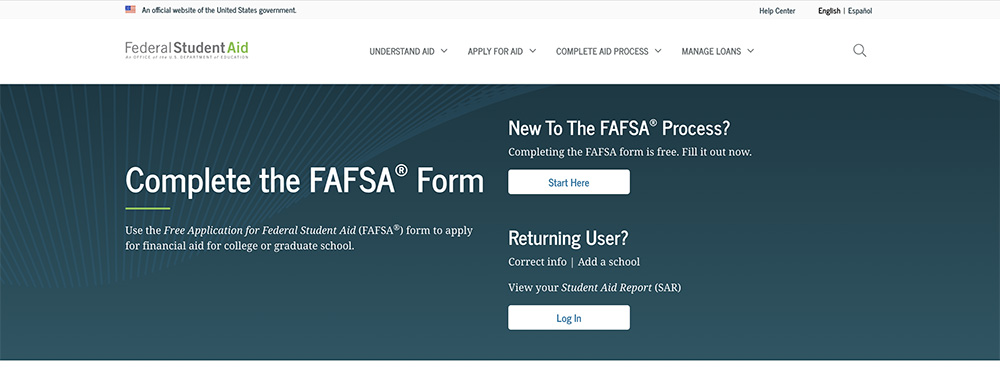Disclaimer: The information on our website is provided for general information purposes only. We make no representations or warranties of any kind, express or implied, about the completeness, accuracy, reliability, suitability or availability with respect to the website or the information contained on our website for any purpose. Any reliance on such information is therefore strictly at your own risk and we are not liable for any damages or losses arising out of or resulting from your reliance on any information contained on our website.
Welcome to our comprehensive guide on how to pay for college in the United States. As you embark on your journey towards higher education, understanding the financial aspects is crucial. College costs can be daunting, but with the right knowledge and strategies, you can navigate the complex landscape of tuition, scholarships, grants, loans, and more.
In this article, we’ll break down the various options available to you, offering practical tips and insights to help you make informed decisions about financing your college education. Whether you’re a high school student planning for the future or a returning adult learner, we’ve got you covered. Let’s dive in and explore the pathways to making your college dreams a reality while minimizing the financial burden.
Time needed: 10 minutes
Review these 12 steps that explain how to pay for college.
- Apply for Federal Financial Aid
First thing’s first, apply for federal financial aid. Apply even if you don’t think you’ll qualify! There are many variables the federal government takes into account to determine your eligibility. For example, the federal government looks at the college’s Cost of Attendance (or COA) as one variable. The COA includes tuition and fees, room and board, books and supplies, and other costs. If you are a dependent, the federal government also determines how much your family can contribute to your college.

The FAFSA is a free online application located at fafsa.ed.gov. Note the .gov at the end of the URL. There are other websites that are not the official U.S. government site and charge fees. You will need to have your taxes to apply for the FAFSA. If under the age of 23 you will also need your parents’ taxes (unless you are married, have a child, or are in the military). Federal aid applications are free and if a fee is required it is not a government site. - College Board’s PROFILE program
The College Board also offers a way to apply for non-federal financial grants and aid through their PROFILE program. The College Board’s PROFILE program allows you to fill out one form that goes to over 400 colleges. The College Board is a not-for-profit organization. One benefit of the CSS Financial Aid Profile is the ability to add your own special circumstance of why you need money.
According to The College Board, it takes most people 45 minutes to 2 hours to complete your profile and as soon as you register. You will need your current and previous year’s W-2 Forms (or your parents), and any bank statements and investment information you may have (stocks, bonds, and savings accounts). The College Board also provides an easy walk-through interactive that will help you accurately complete the application. You can start your CSS Financial Aid Profile at: student.collegeboard.org. - Teacher Education Access for College and Higher Education (TEACH) Grant
The U.S. federal government offers TEACH grants to undergraduate, postgraduate, and graduate students who will take certain classes, graduate, and teach in high-need demographic areas for four years upon graduating. The amount available annually to each student can vary year to year, but is a grant worth a few thousand dollars.
Make sure to review the terms and conditions of the TEACH Grant. For example, you must be enrolled in an eligible school, must be in a high-need teaching field, and must gain employment at a school with low-income families. There are additional conditions that you can research on Studentaid.ed.gov. - The AOTC and LLC tax credit
The American Opportunity Tax Credit (AOTC) allows you to claim $2,500 towards the cost of tuition, fees, and course materials paid during the taxable year. Also, 40% of the credit (up to $1,000) is refundable, so you can get it even if you don’t owe taxes. Even better news, this tax credit was recently increased to include the first 4 years of post-secondary education. You must be a degree-seeking student enrolled at least half-time to receive this credit. To learn more, visit the IRS.gov Education Credits page.
The Lifetime Learning Credit (LLC) differs slightly from the AOTC. It offers up to $2,000 in credit per return toward the cost of tuition and fees, but no portion of that is refundable. That means you will not receive the remainder if the amount exceeds what you owe on your taxes. This credit is also aimed at those with lower incomes, so you may or may not qualify depending on your earnings. However, there is no limit to the number of years you can use this credit, and you don’t need to be degree-seeking or full-time to claim it. Learn more about the Lifetime Learning Credit on irs.gov.
It’s important to note that you are not eligible to obtain the American Opportunity Tax Credit (AOTC) and the Lifetime Learning Credit (LLC) at the same time. However, when a person no longer qualifies for one tax credit (say you already have your 4-year degree and no longer qualify for the American Opportunity Tax Credit), you can still qualify for the Lifetime Learning Credit because this credit does not require you to have less than a 4-year degree to qualify. - Get a job
To get the reimbursement from tax credits, you have to have paid taxes! You can cut down on the amount you pay for college by working your way through school. There are some large employers that offer college scholarships to their employees to help fund their college as well.
You can check out what Chipotle and Starbucks offers their employees. If you’re going to work, you may as well get additional money toward your college tuition and expenses. - Join the Military
The military offers a number of educational options from providing college credit for time served, to tuition waivers and financial assistance for active members, veterans, and their families. The educational benefits can also pay you while you attend college classes. Visit the military or college article for more information. Scholarships are also available through the Army, Air Force, and Navy ROTC.
If you are considering the military or college, did you know you can do both? If you are not sure whether you want to join the military or go to college, the good news is you have options. You can join the military part-time (reserves) and get money while you go to college. You can also join the military full-time and take online college courses or attend the college near your duty station. There are many colleges that cater to the military. You can also go to college full-time and join the ROTC program. This option will allow you to serve after you obtain your college degree and enter as an officer. Of course, you can just go to college and not even join. The option really is up to you! Read our article about military tuition assistance programs. - Join the AmeriCorp or Peace Corp
You only get what you give, and sometimes that’s a lot. A number of volunteer organizations offer special educational awards in return for good service. AmeriCorps, Peace Corps, and National Health Services all offer financial assistance for qualified participants. The AmeriCorps and Peace Corps may not pay much but each covers living expenses and can be very rewarding career opportunities. They also provide college scholarships and tuition assistance along with invaluable experience.
The AmeriCorps is funded by the U.S. Federal Government and focuses on education and public service. At the end of your service, you can receive either an education award or an end-of-service stipend. They accept over 70,000 individuals annually to serve with local and national nonprofit groups.
The Peace Corps is an American volunteer program but has a more global reach. The type of work volunteers do is based on the needs of their host country. Volunteers serve in over 70 countries and their term of service is 27 months. Upon completion volunteers receive thousands of dollars pre-tax. Travel to and from the country you will be serving is paid for and you will receive a monthly stipend to cover your living expenses. PeaceCorps.gov offers more information. - Go to College Abroad
Many overseas institutions are considerably cheaper than those in the U.S. If you speak German, you might consider getting your degree in Germany (where Universities are free, even to foreigners). Or, thanks to a surge in online degree programs and telecommuting jobs, it is now possible to get your degree and work from just about anywhere in the world with a stable internet connection. Online programs are sometimes (though not always) cheaper, and the cost of living in certain other countries can be quite low.
With a part or full-time job that allows you to earn a high-value currency such as the Euro, English Pound, or US Dollar, you could potentially live where your money goes further, cutting your daily expenses drastically and leaving you with a surplus to pay for school. While this option may sound great, the reality of living abroad can be trickier than it seems. It is imperative to choose a stable environment with a reliable internet connection where you are confident you can devote the proper energy and time to your degree and your work. Also consider the complications of being so far from home and family and the possible complications of learning another language. - Compare College Tuitions
Finally, more expensive is not always better. Pick your school with care. Tuition is cheaper for in-state residents, for example, and employers often prefer experience and know-how over an impressive-sounding name. You might consider attending a community college in your first two years and transfer credits later to the university of your choice. Or look into one of the many “tuition-free” schools available around the country. Yes, they do exist. You may have to become a resident in a different state or work on campus for a certain amount of hours). Learn how to research colleges to get the information you need to make an informed decision.
- Research Scholarships
Begin researching scholarships during the summer going into your Junior year. Each scholarship opportunity will have a specific deadline, requirements for eligibility, and application process. Identify the scholarships you want to target, track their due dates, and gather your application materials to put you one step ahead of the game. To find colleges, ask your local college about local scholarships. Bear in mind that you only receive about 10% of scholarships you apply for so don’t get discouraged.
The U.S. Department of Labor also has a Free Scholarship Search Tool to help you find scholarships. Tip: You should not have to pay to submit an application for a scholarship. If you come across a scholarship that includes an application fee it may be a scam. - After College: Find Employers with Student Loan Assistance
Once you graduate from college and researching future employers, check if the company has student loan repayment benefits. This may be a deciding factor for you when comparing job offers.
- Select a Affordable Repayment Plan
The following information does not help you go to college for free, but does help you reduce your cost to replay loans once your college education is complete. There are multiple student loan repayment options to make paying back your college affordable. The Public Service Loan Forgiveness (PSLF) Program forgives the rest of your student loan after you work full-time for the government (this can be federal, state, local, or tribal) and make 120 payments. There are also income-driven repayment plans. There are a number of income-driven repayment options. Check out the Loan Simulator Tool offered on the federal government’s StudentAid.gov website.











